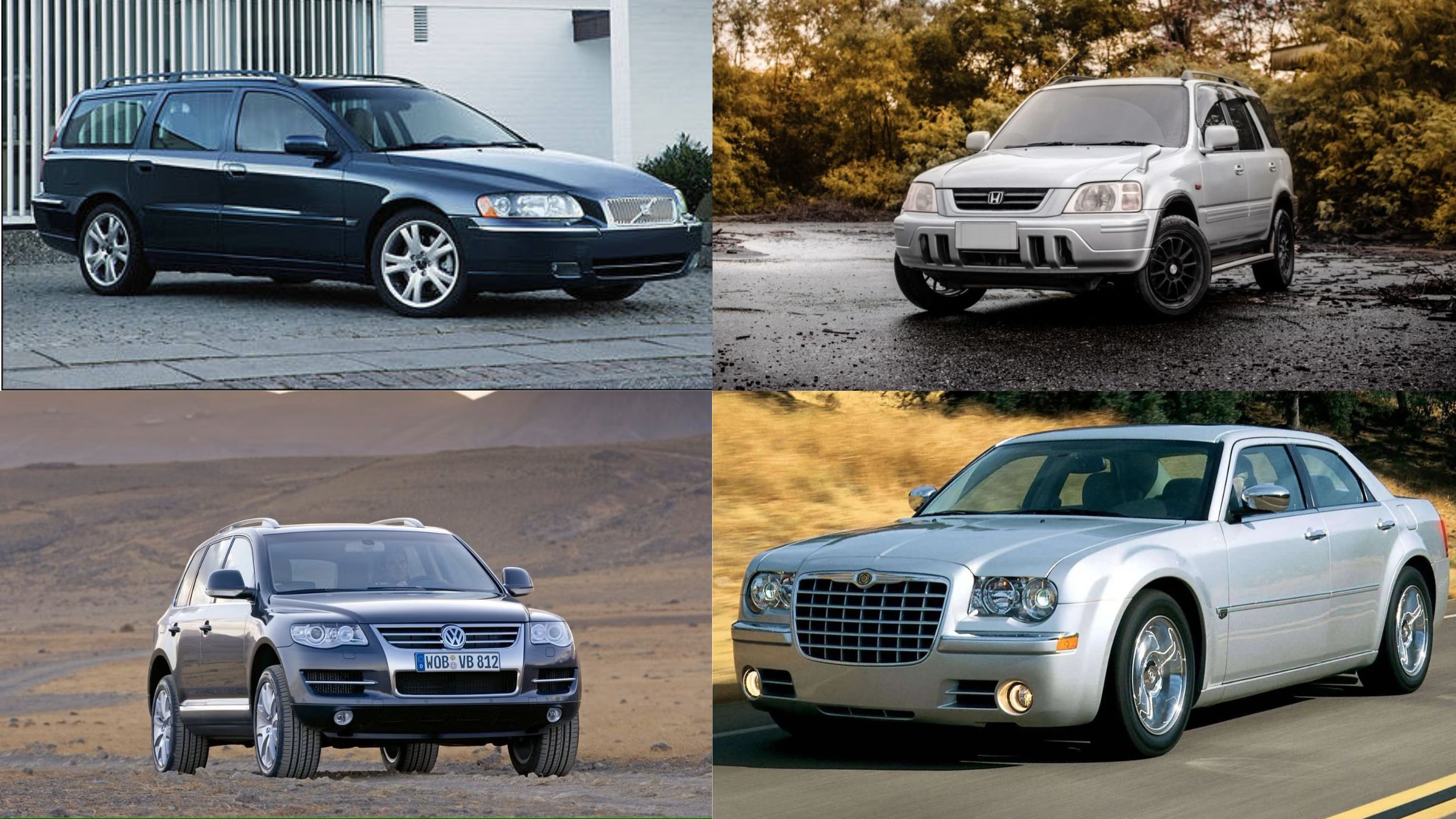Winter driving demands vehicles that can handle harsh conditions without leaving you stranded in the cold. A good winter beater combines affordability, reliability, and capability when temperatures drop and roads become treacherous.
Not all used cars are created equal when it comes to winter performance. Some shine as dependable companions through the snow and ice, while others are notorious for leaving drivers shivering on the roadside.
In this guide, we’ll explore five affordable used vehicles that have proven themselves as reliable winter warrior cars and SUVs that start consistently in freezing temperatures, handle well on slippery surfaces, and have parts readily available when maintenance is needed.
These vehicles offer excellent value for budget-conscious drivers who still need dependable transportation during the coldest months. We’ll also examine five popular models that, despite their appeal in other seasons, become problematic winter companions.
These vehicles often struggle with cold-weather starting, lack appropriate traction capabilities, or have specific cold-weather reliability issues that make them risky choices when temperatures plummet.
5 Reliable Winter Beaters
Understanding which vehicles excel in winter conditions – and which ones falter can save you from costly repairs, dangerous situations, and the frustration of being stranded when you need transportation most. Let’s explore these winter winners and losers.
1. Subaru Outback (2005-2009)
The Subaru Outback stands as perhaps the quintessential winter beater, combining affordability, reliability, and exceptional winter performance in one practical package.
What makes older Outbacks particularly impressive is their standard symmetrical all-wheel-drive system, which continuously monitors road conditions and distributes power to wheels with the most traction.
Unlike many competitors with part-time AWD systems, the Outback’s full-time system remains engaged at all times, providing immediate response to slippery conditions without driver intervention.
The raised ground clearance (8.7 inches) allows these wagons to go through unplowed roads and snowdrifts that would beach many sedans. Meanwhile, the horizontally-opposed “boxer” engine design places the weight lower in the chassis, improving stability on slick surfaces.
This generation of Outback came with either a reliable 2.5-liter four-cylinder or an optional 3.0-liter six-cylinder, both known for cold-starting reliability even in sub-zero temperatures.
Maintenance considerations are favorable for budget-conscious winter drivers. Parts availability remains excellent even for these aging vehicles, with robust aftermarket support and reasonable prices.
Their popularity in snowy regions means mechanics are generally familiar with common issues. The main maintenance concern is timing belt replacement every 105,000 miles a job that shouldn’t be skipped, especially in older models.

Rust resistance is another strong point for Outbacks from this era, especially when compared to domestic competitors. The interior heating systems are robust, with quick-warming capabilities essential for frigid mornings.
While fuel economy isn’t class-leading (expect about 20-26 mpg), the relatively simple engineering means fewer electronic components to fail in extreme conditions. Older Outbacks with 150,000+ miles can still serve faithfully as winter beaters when properly maintained, making them an exceptional value proposition for snowy climates.
2. Toyota 4Runner (1996-2002)
The third-generation Toyota 4Runner represents an almost perfect intersection of reliability, winter capability, and affordability that’s hard to match in today’s market.
Unlike many modern crossovers that prioritize on-road comfort, these 4Runners were built on a truck chassis with genuine off-road capabilities that translate beautifully to severe winter conditions.
Their body-on-frame construction provides exceptional durability against the corrosive effects of road salt, helping these SUVs survive in regions where many vehicles succumb to rust within a decade.
The available four-wheel-drive system in these 4Runners isn’t just for show; it includes a proper low-range transfer case for extreme conditions. When equipped with the V6 engine (avoid the underpowered four-cylinder), these vehicles deliver reliable cold-weather starting thanks to Toyota’s renowned engineering.
The 3.4-liter V6 (5VZ-FE) is particularly celebrated for its durability, with many examples easily exceeding 300,000 miles with basic maintenance. The simple electronic systems in this generation mean fewer points of failure in extreme cold compared to newer, more complex vehicles.
From a practical winter driving perspective, the 4Runner excels with excellent visibility, a commanding driving position, and good ground clearance for going through unplowed roads.
The heater system warms the cabin quickly, a critical feature often overlooked when evaluating winter vehicles. Maintenance costs remain reasonable due to the vehicle’s straightforward design and the abundance of both OEM and aftermarket parts.
Common wear items like wheel bearings and suspension components are affordably priced and widely available.
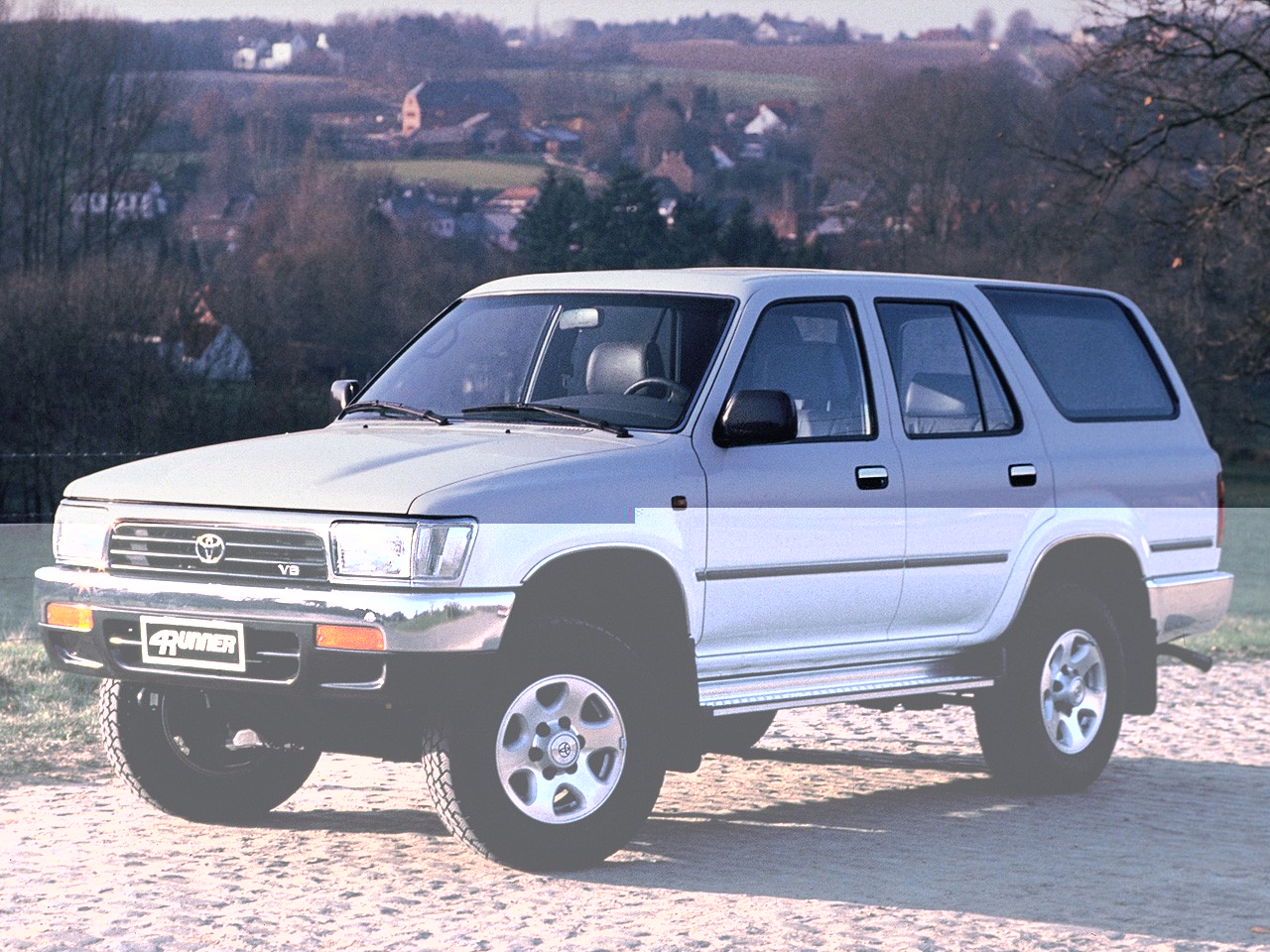
Perhaps most importantly for winter beater shoppers, these 4Runners have proven remarkably resistant to the “nickel and diming” that plagues many aging vehicles.
Their reputation for reliability means that even high-mileage examples can represent excellent value, provided they’ve received basic maintenance.
The main downsides are relatively poor fuel economy (15-19 mpg) and the premium these vehicles command even with high mileage, but that price premium directly reflects their exceptional durability in harsh winter conditions.
3. Honda CR-V (2002-2006)
The second-generation Honda CR-V offers an ideal balance of winter practicality, fuel efficiency, and legendary Honda reliability, making it an exceptional winter beater candidate.
Unlike many competitors from this era that have long since rusted away, these CR-Vs demonstrate remarkable corrosion resistance, particularly in the structural components.
The available Real Time 4WD system, while not as robust as true four-wheel drive, provides sufficient traction for most winter conditions by automatically transferring power to the rear wheels when the front wheels slip, all without driver intervention.
The 2.4-liter K24 engine represents one of Honda’s most reliable powerplants, known for exceptional cold-weather starting even in extreme temperatures.
Unlike many engines that struggle when temperatures plummet, the CR-V’s fuel injection system and robust starter motor typically fire up without hesitation even after sitting overnight in sub-zero conditions.
The timing chain design (rather than a belt) eliminates one major maintenance concern, contributing to lower ownership costs over time.
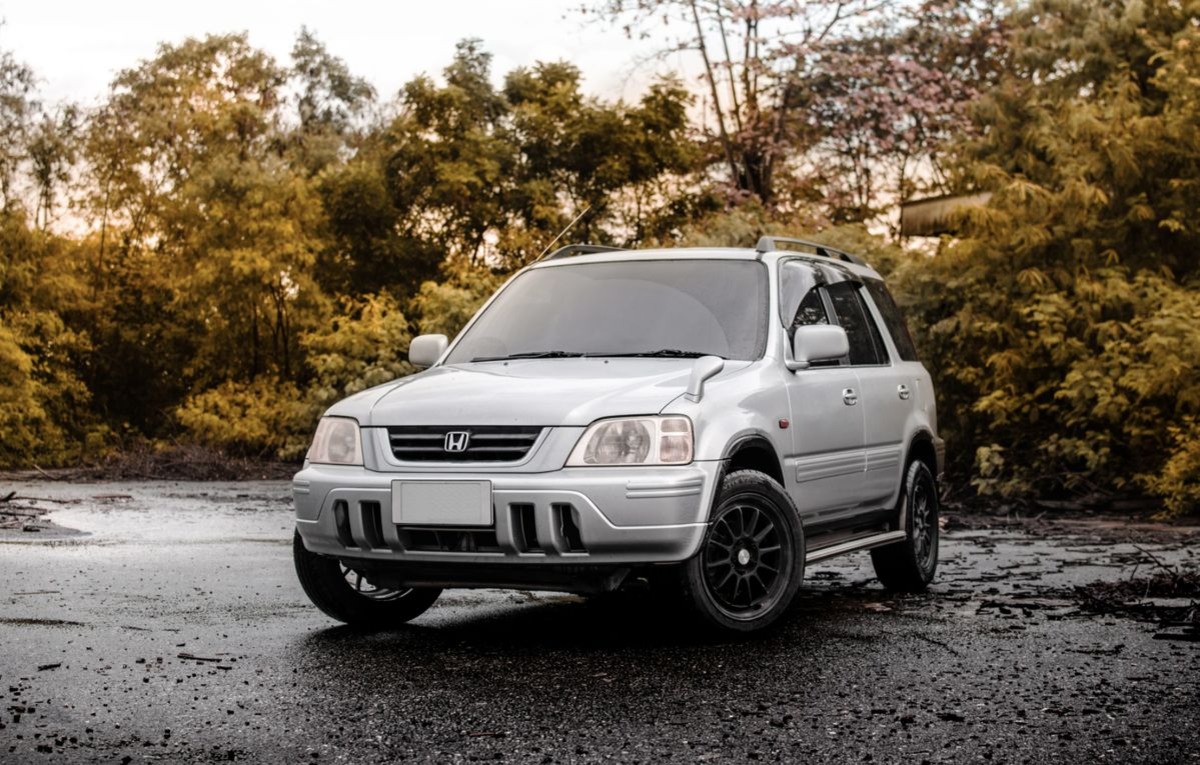
From a practical winter perspective, the CR-V offers several thoughtful features that enhance its cold-weather usefulness. The raised seating position and excellent visibility make going through snowy roads less stressful.
The rear seats fold completely flat, creating a surprisingly generous cargo area that can accommodate winter sports equipment or emergency supplies.
The vehicle’s relatively compact exterior dimensions make it manageable in tight winter parking situations while maintaining good ground clearance for snow navigation.
The heating system deserves special mention; it warms quickly and distributes heat evenly throughout the cabin, a critical feature often overlooked when evaluating winter vehicles. Maintenance remains straightforward with excellent parts availability and reasonable costs.
The main mechanical weak points are the front compliance bushings and rear differential fluid, which requires regular changes (often overlooked by owners).
When properly maintained, finding a CR-V from this generation with 200,000+ miles that still runs reliably is not uncommon, making them an excellent value proposition for winter driving on a budget.
4. Volvo V70/XC70 (2001-2007)
The P2-platform Volvo V70 and its more rugged XC70 variant represent perhaps the most overlooked winter beaters on the market, offering European engineering with surprising affordability and exceptional cold-weather performance.
These Swedish wagons were engineered for some of the world’s harshest winter environments, with electrical systems designed to function flawlessly in extreme cold and heating systems that deliver remarkable cabin warming speed even in sub-zero temperatures.
The XC70 variant adds increased ground clearance and body cladding, making it particularly suitable for rural winter driving. Available with either front-wheel drive or a capable all-wheel-drive system (Haldex), these Volvos deliver sure-footed traction on snow and ice.
The AWD system intelligently distributes power where needed, while the vehicles’ substantial weight provides helpful stability in gusty winter conditions.
The turbo five-cylinder engines produce excellent low-end torque ideal for winter driving scenarios and demonstrate reliable cold starting even at extreme temperatures. The heated seats (standard on most trims) warm quickly, a genuine comfort on frigid mornings.

These Volvos offer several winter-specific advantages that competitors lack. The headlight wipers and washers keep illumination clear during slushy conditions.
The sophisticated climate control system maintains a consistent cabin temperature regardless of outside fluctuations.
The heated side mirrors clear quickly, enhancing safety during snowstorms. From a practical perspective, the cavernous cargo capacity easily accommodates winter sports equipment or emergency supplies.
The main considerations when selecting a V70/XC70 as a winter beater involve maintenance history.
These vehicles are extremely durable when properly maintained, but can become problematic if previous owners deferred service. The timing belt requires replacement every 100,000 miles, a job that shouldn’t be postponed.
The AWD transfer case requires specific service intervals often overlooked by non-Volvo mechanics. However, for the budget-conscious winter driver willing to perform basic maintenance, these Swedish wagons offer exceptional value.
Their depreciation curve means that mechanically sound examples can often be found at prices significantly below their actual winter utility value, making them secret weapons for savvy winter drivers.
Also Read: 5 Reliable Old Trucks and 5 That Are Best Left Alone
5. Jeep Cherokee XJ (1997-2001)
The Jeep Cherokee XJ represents perhaps the most purpose-built winter beater on our list, combining mechanical simplicity, genuine off-road capability, and surprising affordability.
Unlike modern vehicles laden with complex electronics, the XJ’s straightforward design means fewer potential failure points during extreme winter conditions.
The inline-six 4.0-liter engine (avoid the underpowered four-cylinder) is legendary for its reliability and cold-weather starting capabilities, with many mechanics considering it one of the most durable powerplants ever mass-produced. Its torquey nature delivers confident performance in snow without requiring high RPMs.
The available Command-Trac four-wheel-drive system provides genuine capability that outperforms many modern crossovers claiming “all-wheel drive.”
This system allows drivers to select 2WD for normal conditions, 4WD High for snowy roads, and 4WD Low for extreme situations versatility that proves invaluable during varying winter conditions.
The XJ’s boxy design and excellent visibility make going through narrow snow-lined roads significantly less stressful than in many modern vehicles with compromised sightlines.
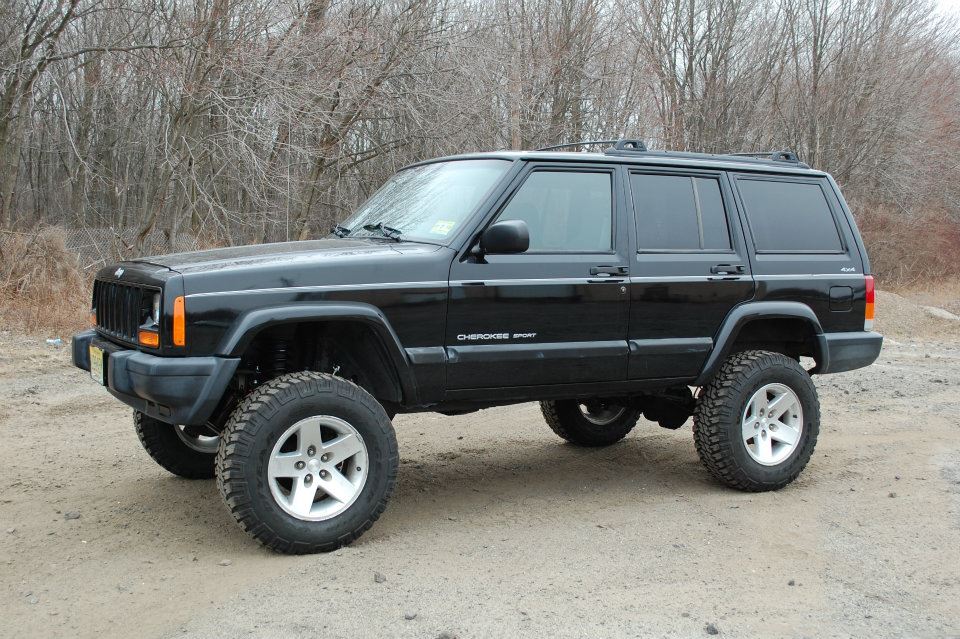
From a practical winter perspective, the Cherokee offers several advantages. The simple HVAC system delivers robust heating performance without complex electronic controls that can fail. The substantial ground clearance allows navigation through deep snow that would immobilize most sedans.
The compact exterior dimensions (compared to full-size SUVs) make it manageable in tight winter parking situations while maintaining a reasonably spacious interior. Recovery points are easily accessible if extraction becomes necessary.
The main considerations when selecting an XJ Cherokee involve rust inspection (particularly around the rear quarter panels and rocker panels) and transmission condition.
The automatic transmissions are generally durable but benefit from regular fluid changes, a service history many of these vehicles lack. The suspension components, particularly the front track bar, should be inspected before winter use.
When these maintenance points are addressed, a properly maintained XJ can deliver exceptional winter performance even with 200,000+ miles. Their simple design means most repairs can be completed with basic tools and mechanical knowledge a significant advantage if roadside repairs become necessary during winter travel.
5 That’ll Leave You Stranded
1. Range Rover (2002-2012)
The L322 generation Range Rover presents perhaps the cruelest irony in winter driving a vehicle explicitly engineered for severe off-road conditions that paradoxically becomes unreliable precisely when winter demands dependability.
Despite its impressive ground clearance, sophisticated air suspension, and advanced terrain response system, theoretically perfect for snow navigation, these Range Rovers suffer from multiple cold-weather vulnerabilities that transform them from capable SUVs to expensive lawn ornaments when temperatures plummet.
The air suspension system represents the most notorious winter failure point. The air compressor and associated lines become particularly susceptible to moisture infiltration in freezing conditions, leading to sudden suspension collapse, often stranding drivers with a vehicle that settles onto its bump stops with minimal ground clearance.
This failure transforms the once-commanding SUV into a vehicle unable to go through even modest snowfall. Even when functioning, the system requires substantially longer warm-up time in cold weather, during which the vehicle remains impractically low.

Electrical gremlins multiply exponentially in winter conditions. The complex network of control modules and sensors suffers from connection degradation accelerated by moisture intrusion.
Cold temperatures exacerbate existing weaknesses in the wiring harness, leading to cascading failures that often appear temporarily resolved, only to return unpredictably.
The battery strain from cold starts quickly reveals any weakness in the electrical system, frequently resulting in no-start conditions with cryptic error codes that challenge even experienced mechanics.
The sophisticated 4.4-liter BMW-derived V8 (or later 5.0-liter Jaguar engine) compounds winter reliability concerns with cooling system vulnerabilities. The plastic coolant components become notably brittle in extreme cold, leading to sudden failures.
Engine management sensors frequently deliver false readings in cold weather, triggering limp-home mode or complete shutdown. When repairs become necessary, as they inevitably do, parts availability can create extended downtime, with specialized components often requiring dealer-only ordering.
These factors combine to make the L322 Range Rover perhaps the most deceptively unsuitable vehicle for winter beater duty, despite its theoretical capability.
2. Mercedes-Benz E-Class (2003-2009, W211)
The W211 Mercedes-Benz E-Class exemplifies a vehicle whose summer elegance transforms into winter frustration, with sophisticated systems particularly vulnerable to cold-weather failure.
While projecting an image of German engineering excellence, these E-Class models harbor several critical weaknesses that become progressively worse as temperatures drop.
The complex Sensotronic Brake Control (SBC) system represents perhaps the most concerning winter liability. This early brake-by-wire technology develops pump failures that occur with alarming frequency in cold weather, potentially leaving drivers without proper braking capacity precisely when winter road conditions demand it most.
The sophisticated electronic architecture proves especially problematic in winter conditions. The numerous control modules communicate via a complex CAN bus network that demonstrates particular vulnerability to moisture intrusion during freeze-thaw cycles.
When these communications fail, cascading error messages appear on the instrument cluster, frequently leading to vehicle immobilization through the electronic ignition system. The central command unit controlling these systems often requires complete replacement rather than repair – a costly proposition for winter beater budgets.
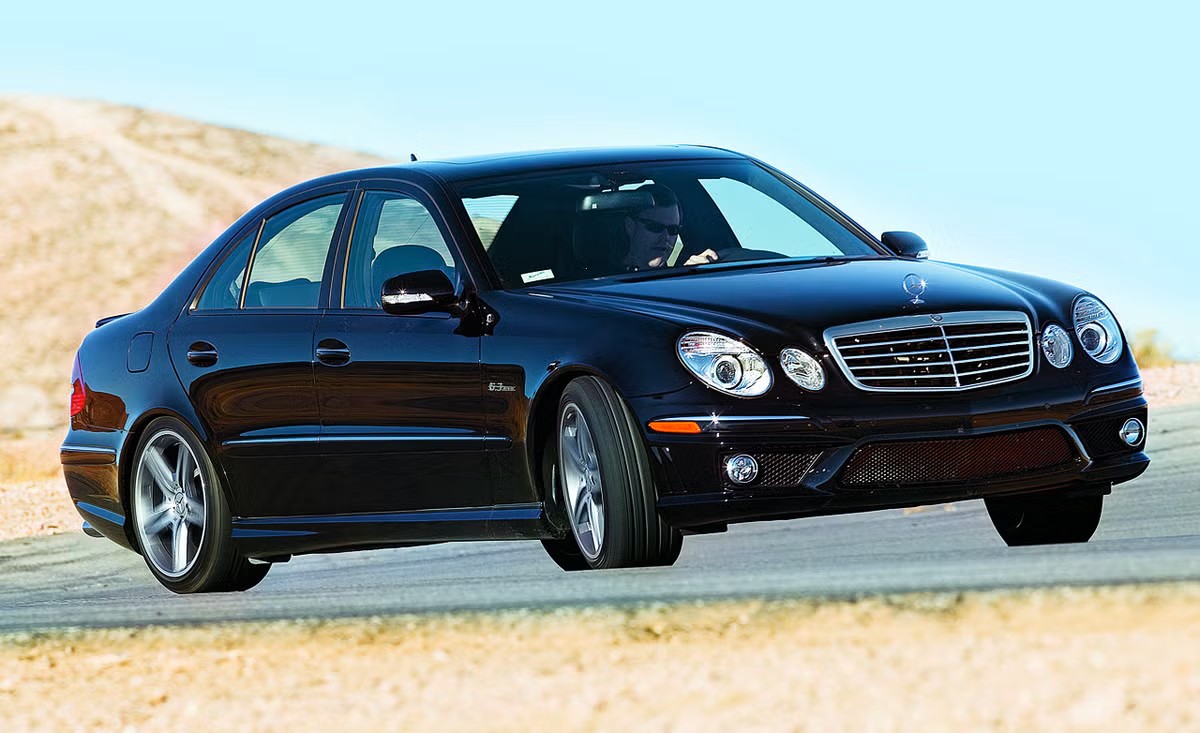
Cold-weather starting reveals another significant weakness. The complex fuel delivery system develops issues that may remain dormant in warmer months but emerge dramatically in winter.
Fuel pumps demonstrate a particular tendency to fail during cold starts after the vehicle sits overnight in freezing temperatures.
The crankshaft position sensor, critical for engine operation, frequently fails in extreme cold, resulting in no-start conditions that strand drivers with little warning. When these components require replacement, parts and labor costs rapidly exceed the practical budget for winter transportation.
Even seemingly minor winter convenience features become significant reliability issues. The sophisticated climate control system frequently malfunctions in extreme cold, with blend door failures and electronic control issues leading to no-heat conditions inside the cabin.
The pneumatic door locks and trunk actuators become notably sluggish and may fail in extreme cold.
These reliability concerns, combined with expensive parts and specialized repair requirements, make the W211 E-Class a particularly poor winter beater choice despite its refined appearance and seemingly appropriate all-wheel drive (in 4MATIC variants).
3. Dodge Charger/Chrysler 300 (2005-2010)
The first-generation Chrysler LX platform vehicles (Dodge Charger and Chrysler 300) represent perhaps the most tempting winter beater trap offering impressive V8 power and available all-wheel drive at seemingly bargain prices that mask significant cold-weather vulnerabilities.
While their aggressive styling and comfortable interiors remain appealing, these sedans harbor multiple critical weaknesses that become progressively worse as temperatures drop, transforming them from transportation to frustration when winter arrives in earnest.
The electrical system presents the most immediate winter concern. The poorly sealed Totally Integrated Power Module (TIPM), essentially the vehicle’s central nervous system, demonstrates particular vulnerability to moisture intrusion during freeze-thaw cycles.
When this critical component fails, it creates seemingly random electrical gremlins ranging from inoperative wipers (dangerous during snowstorms) to complete no-start conditions.
Replacement requires specialized programming and often dealership involvement, creating extended downtime during winter when alternative transportation becomes most necessary.
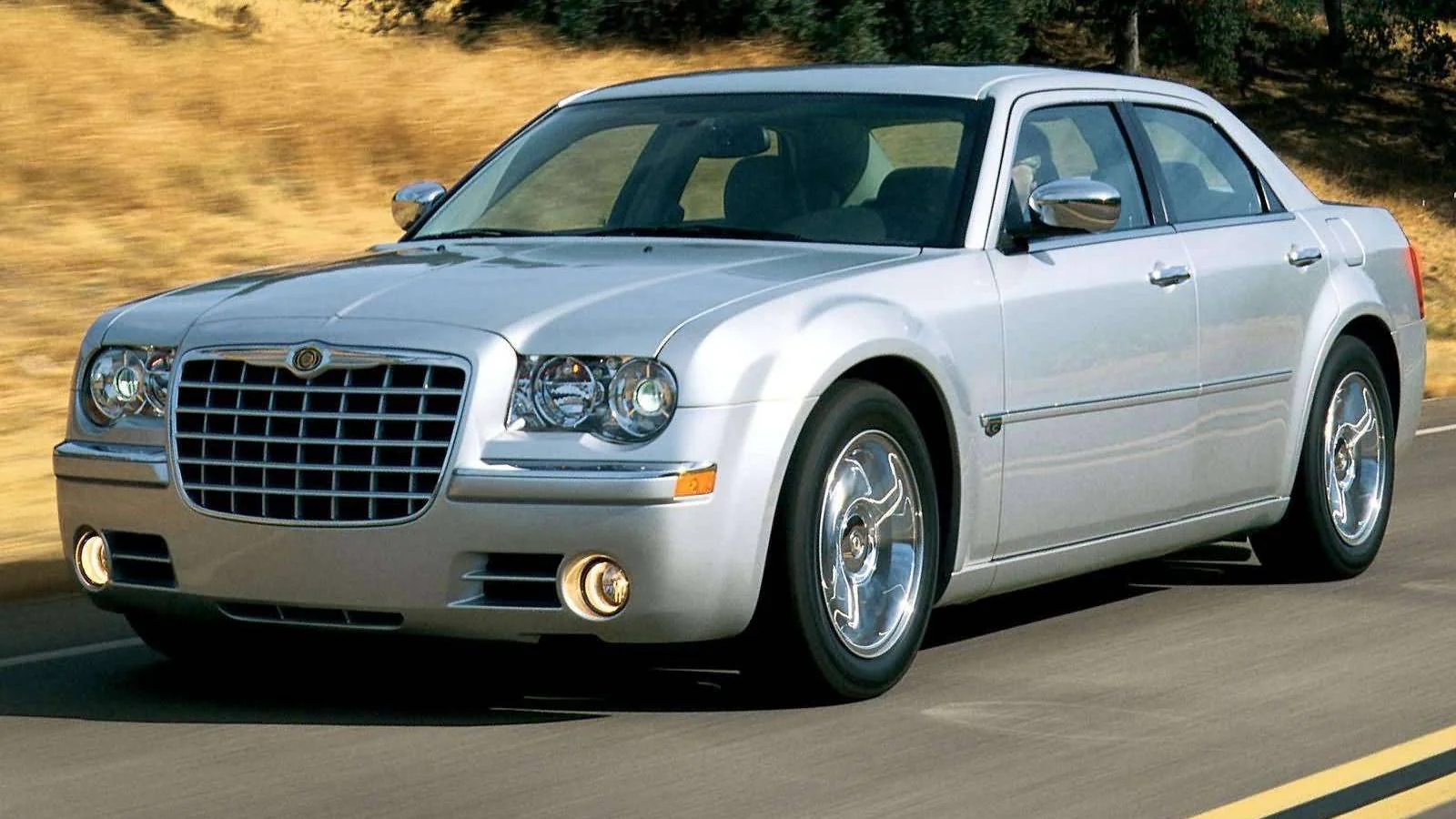
The cooling system compounds winter reliability concerns with multiple vulnerability points. The plastic thermostat housing becomes notably brittle in extreme cold, often developing cracks that lead to sudden coolant loss.
The water pump design shows premature failure tendencies accelerated by cold operation, while the radiator neck design creates a common failure point during freeze-thaw cycles.
These cooling system failures often cascade into more serious issues, as engine overheating episodes damage head gaskets and warp cylinder heads, transforming a relatively simple repair into a major engine rebuild.
Even the available all-wheel drive system (theoretically beneficial for winter) introduces additional reliability concerns. The transfer case demonstrates particular vulnerability to the frequent shifting between drive modes that winter conditions demand.
The front differential exhibits premature wear patterns not commonly seen in competitor vehicles, often leading to expensive repairs.
The electronic control module governing the AWD system frequently delivers false readings in extreme cold, defaulting the system to two-wheel drive without driver notification, a particularly dangerous scenario when encountering unexpected slippery conditions.
These reliability concerns, combined with rapidly escalating repair costs, make these Mopar sedans particularly poor winter beater choices despite their initial appeal.
4. BMW 7-Series (2002-2008, E65/E66)
The fourth-generation BMW 7-Series (E65/E66) epitomizes a technological showcase that transforms into a winter nightmare, with sophisticated systems particularly vulnerable to cold-weather failure.
Despite its impressive engineering and luxury appointments, this flagship sedan harbors several critical weaknesses that become progressively worse as temperatures drop.
The controversial iDrive system revolutionary for its time becomes particularly problematic in winter, with the control knob mechanism and associated electronics demonstrating vulnerability to temperature fluctuations.
When this central interface fails, numerous vehicle functions become inaccessible, from climate controls to vehicle settings necessary for proper operation.
The complex electronic architecture proves especially troublesome in winter conditions. The vehicle utilizes over 70 control modules communicating via a sophisticated network that demonstrates particular susceptibility to moisture intrusion during freeze-thaw cycles.
When these communications fail, the vehicle frequently enters a restricted operating mode or fails to start entirely.
The trunk-mounted battery arrangement creates additional cold-weather starting concerns, as the complex voltage management system often misinterprets the battery’s condition in extreme temperatures, leading to no-start situations even with a relatively healthy battery.
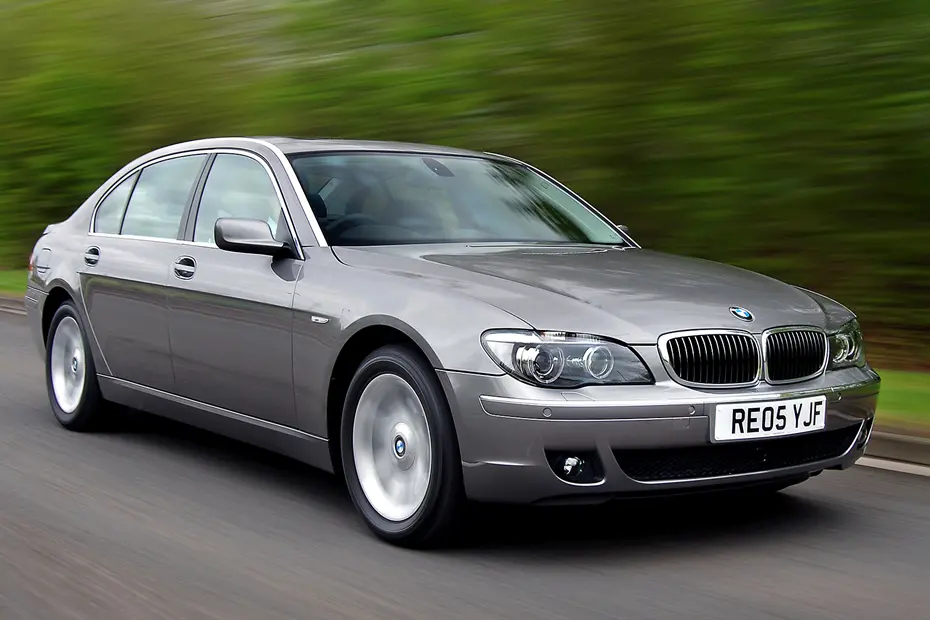
Cold-weather operation reveals another significant weakness in the pneumatic suspension system. The air compressor demonstrates dramatically reduced efficiency in extreme cold, while the air lines and associated components become brittle and prone to failure.
When this system fails, the vehicle often settles to an undrivable height with minimal ground clearance, precisely when increased clearance becomes most valuable in winter conditions.
The sophisticated electronic damping control similarly exhibits failure patterns accelerated by cold weather, creating unpredictable handling characteristics on already treacherous winter roads.
Even the complex variable valve timing system (VANOS) demonstrates particular vulnerability to cold operation. The solenoids and associated components frequently develop issues that may remain dormant in warmer months but emerge dramatically during winter cold starts, creating rough running conditions or complete failure to start.
When repairs become necessary, as they inevitably do, parts availability, specialized diagnostic equipment requirements, and labor costs rapidly exceed practical winter beater budgets.
These factors combine to make the E65/E66 7-Series perhaps the most financially ruinous winter beater choice despite its initial luxury appeal.
5. Volkswagen Touareg (2004-2010)
The first-generation Volkswagen Touareg presents a particularly deceptive winter proposition an SUV with genuine off-road credentials that harbors numerous cold-weather reliability concerns, capable of transforming winter driving into an exercise in frustration.
Despite impressive ground clearance, sophisticated all-wheel drive, and locking differentials theoretically perfect for snow traversal, these Touaregs suffer from multiple vulnerabilities that materialize precisely when winter demands dependability most.
The air suspension system (when equipped) represents perhaps the most notorious winter failure point, with compressors and air lines particularly susceptible to moisture infiltration in freezing conditions, often resulting in complete system failure.
The complex electrical architecture proves especially problematic in winter conditions. The numerous control modules communicate via a sophisticated CAN bus network vulnerable to voltage fluctuations common during cold starts.
When these communications fail, the vehicle frequently enters a limited operating mode or fails to start entirely.
The central convenience control module governing everything from windows to door locks demonstrates particular susceptibility to moisture intrusion during freeze-thaw cycles, creating unpredictable electrical gremlins that challenge even experienced VW technicians to diagnose conclusively.

Cold-weather starting reveals another significant weakness in both the V6 and V8 powerplants. The direct injection system develops issues that may remain dormant in warmer months but emerge dramatically in winter.
Fuel pressure regulators and high-pressure pumps demonstrate failure patterns accelerated by cold operation, while the complex emissions equipment, particularly the exhaust gas recirculation system, frequently clogs in the temperature extremes winter presents.
When these components require replacement, parts and labor costs rapidly exceed the practical budget for winter transportation. Even routine maintenance becomes extraordinarily complicated, creating extended downtime during winter when alternative transportation is most challenging.
The engine positioning requires partial disassembly for many routine services, while specialized tools remain necessary for even basic diagnostic procedures.
The transfer case and differential fluids require precision filling procedures often beyond typical service centers’ capabilities.
These factors combine to make the Touareg particularly ill-suited for winter beater duty despite its theoretical capability and seemingly attractive depreciation curve.
Also Read: 5 Cars You Can Keep for 15+ Years and 5 That Break Within 5 Years

